Installing flashing is a crucial step to preventing any type of damage to your home. Without it, water can get under the shingles and you could experience roof leaks, leading to water damage, potential wood rot, and even structural damage. But what exactly is roof flashing, and what does it do?
What is roof flashing?
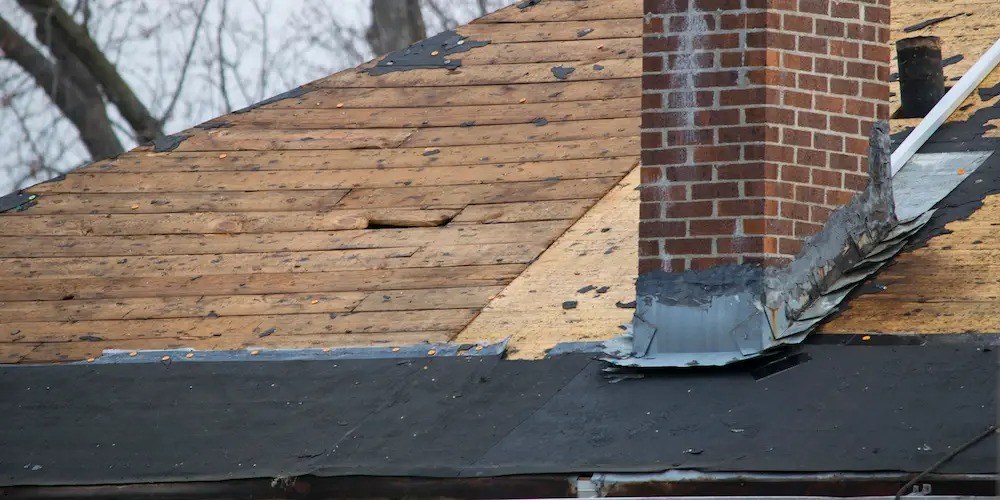
Image source: White House Roofing & Construction
Roof flashing is a thin piece of sheet metal, typically made from galvanized steel or other metals, which is used along with underlayment to direct water runoff away from susceptible areas like chimneys, vents, skylights, roof valleys, eaves, or where the wall and roof meet. The metal flashing is usually placed underneath the shingles, but there are several types and ways of installing it. Let's dig into the details.
Types of roof flashing
Continuous flashing

Image source: JLC Online
Continuous flashing, also known as apron flashing, is one long piece of metal that prevents leaks where the roof and sidewall meet. Because the long pieces of flashing don't flex as your home expands throughout the year, continuous flashing usually features built-in expansion joints, which help prevent the flashing from breaking. However, continuous flashing isn't too popular among homeowners because it's not as effective as other types. Continuous flashing features a small diverter on the outside edge that prevents water leaks, but it can overwhelm the diverter and get underneath the shingles when it rains heavily.
Step flashing

Image source: Arbor
Step flashing is an exposed rectangular piece of flashing that's bent at a 90-degree angle and nailed down.
First, a waterproof membrane is layered on the bottom, which is called the base flashing, and then the layer of L-shaped metal step flashing is layered under the shingles against the vertical wall.
Counter flashing, sometimes referred to as cap flashing, is then layered on top of the step flashing and can be installed in several different ways.
For further protection, homeowners could also consider installing kick out flashing after step flashing. Kickout flashing is a special type of flashing typically made from aluminum or galvanized steel, typically seen where the roof and wall meet. This type of flashing helps divert excess water into the gutter.
More homeowners prefer step flashing because of its ability to direct water onto the top of the next row of shingles below, making it harder to travel under the shingles. You'll typically see step flashing used around chimneys, dormers, and where the sidewall meets the roof deck.
Drip edge flashing
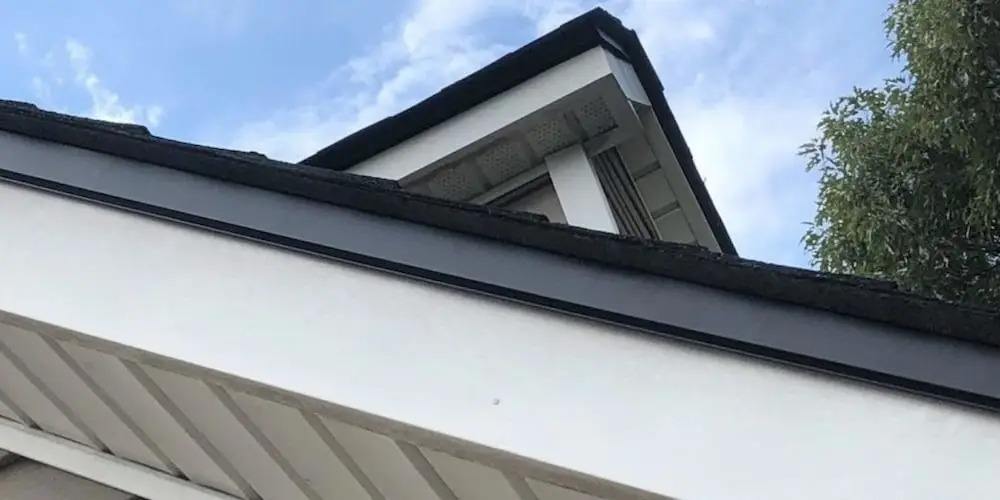
Image source: Infinite Roofing
Drip edge flashing is made from a variety of different metals or plastics, typically found at the edges or the eaves of your roof, and is installed on top of the underlayment to prevent water from filling up the gutters and rotting the fascia. Drip edges are extremely important for preventing any damage to your home and they are now even required by most building codes in North America.
Valley flashing

Image source: Herman’s Supply Company
Once underlayment, flashing, and asphalt shingles are installed over the new roof, you'll have to address the valley flashing. The roof valley is where the two slopes meet, creating areas of your roof where water can collect, leading to potential leaks. Shingles can erode easily in roof valleys, so whether you have a closed, woven, or open valley, you'll need to flash them to avoid leaks. Valley flashing usually comes in a W or V shape and slightly overlaps the edges of the roof. The flashing is then nailed on the edges and sealed with roof cement.
Vent pipe flashing

Image source: Oatey
In addition to skylights and dormers, vent pipes are one of the most susceptible areas of the roof to leakage. Though most of these pipes feature flashing boots sealed around the pipe, they tend to crack or become damaged over time, requiring additional flashing. Another technique roofing contractors sometimes use is sealing the flashing boot with roofing cement, which can also dry out and crack over time. Vent pipe flashing is made of either a plastic or metal roofing material and has a flange base, which wraps around the pipe and is installed under the top and side shingles but above the shingles below the pipe.
Flashing materials
There’s a variety of different materials that flashing can be made from, but the three most common materials are aluminum, copper, and galvanized steel.
Aluminum
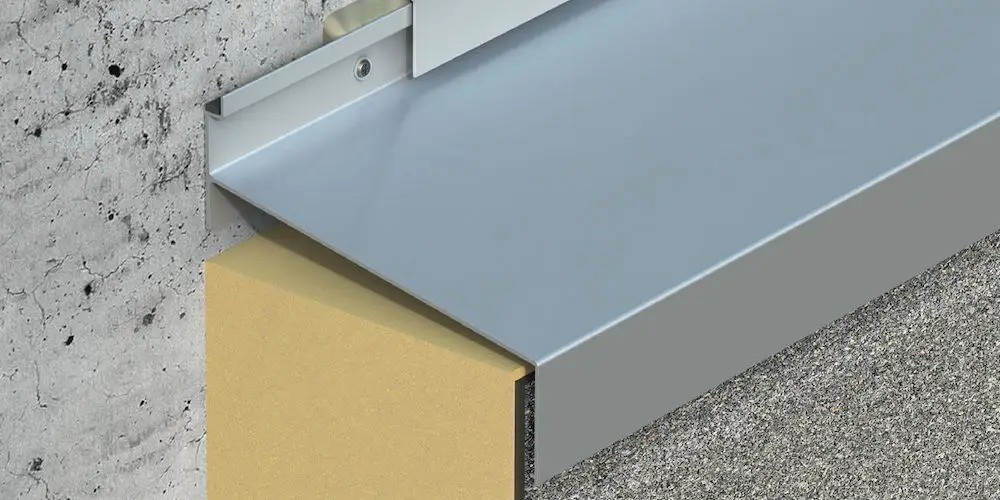
Image source: DIY Slate Roof
Aluminum is a popular material to use for flashing due to its durability, low cost, ability to bend, and lightweight qualities. If it comes into contact with concrete or any masonry though, the aluminum flashing will require a special coating to avoid corrosion. If you live in a coastal climate, we recommend coating the aluminum or choosing another material.
Galvanized steel
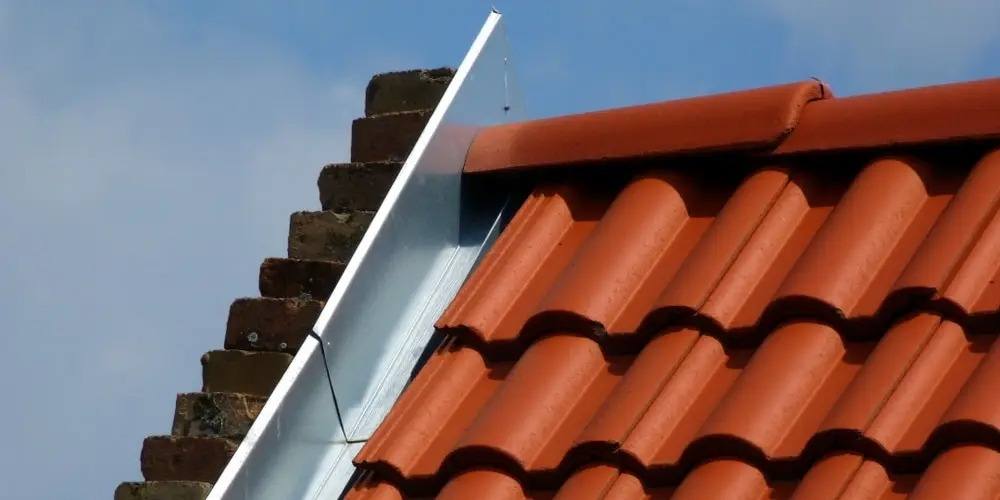
Image source: StrongGuard
Galvanized steel is a readily available and cost-effective flashing material but also not very durable and can corrode over time, especially in more volatile climates. Although galvanized has a special zinc coating that protects them from corrosion, it does wear down over time. Galvalume has a longer lifespan, but like galvanized steel, it can be problematic when it comes into contact with treated wood, concrete, or masonry.
Copper
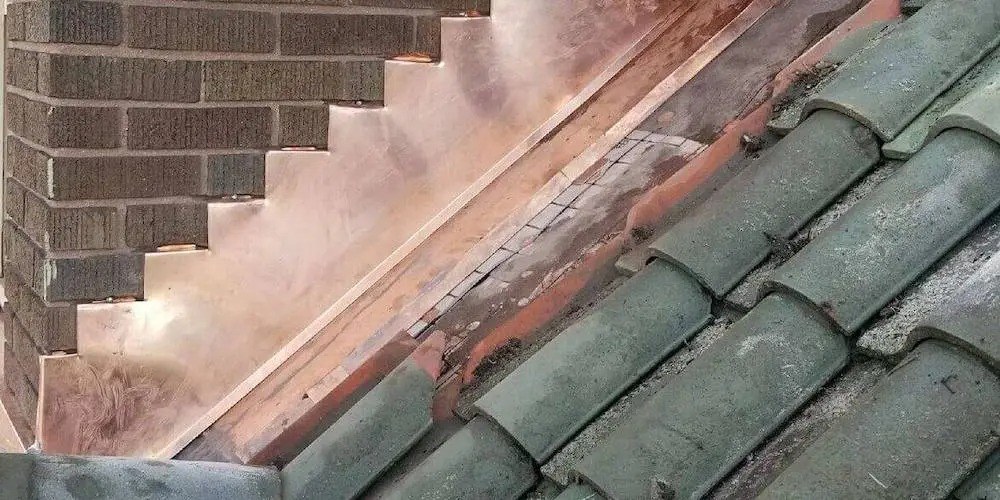
Image source: Ryan Restorations
Copper flashing is incredibly durable, resistant to corrosion, and able to be soldered but is also very expensive. You'll typically see copper for chimney flashing, valleys, or step flashing on hips and ridges. Available in both soft and cold-rolled, soft copper is easy to mold but cold-rolled copper is more durable. Copper roofs don't react with masonry but they should not come into contact with galvanized steel, which could cause rapid corrosion. Unpainted copper will also develop patina and change colors to a blue-green tone.
Is roof flashing necessary?
The short answer is yes. In fact, roof flashing is so critically important that without it, you could experience serious damage to your home and roof replacement in the event of storms or excess rain. Even most building codes in North America require some type of roof flashing to weatherproof the building.
Roof flashing essentially directs water away from susceptible areas like windows, skylights, chimneys, and valleys where water can collect or travel under the shingles and roof surface. Choosing the right type and material for flashing all depends on your roofing system, budget, and climate, but it's definitely necessary.
Joe is a home improvement expert and content specialist for Fixr.com. He’s been writing home services content for over eight years, leveraging his research and composition skills to produce consumer-minded articles that demystify everything from moving to remodeling. His work has been sourced by various news sources and business journals, including Nasdaq.com and USA Today. When he isn’t writing about home improvement or climate issues, Joe can be found in bookstores and record shops.
